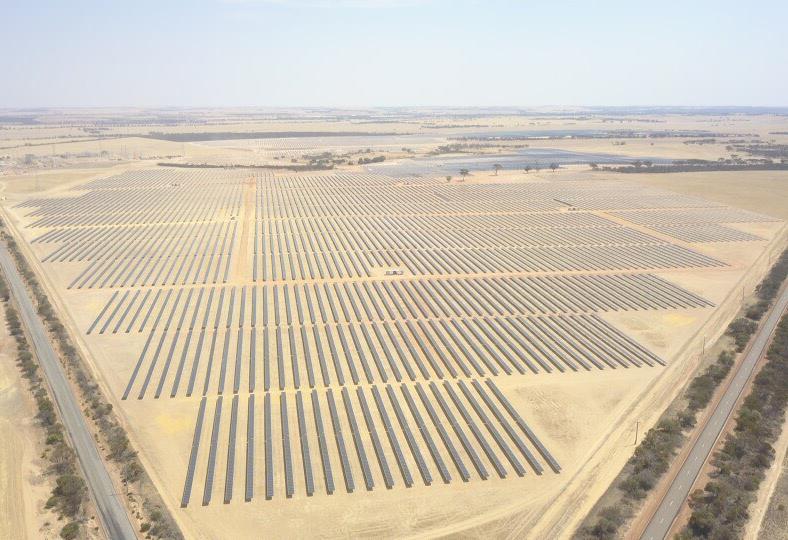Germany and Australia shook hands on an agreement for a joint feasibility study into green hydrogen production and trade back in September. Since then, the University of New South Wales (UNSW) has been announced as the leader of a consortium of research and industry partners from both nations to test the viability of a renewable energy-based hydrogen supply chain between the countries. And this week, representatives of from Germany and Western Australia (WA) have met for a Renewable Hydrogen Roundtable to discuss opportunities to partner and collaborate on a shared green hydrogen future.
Earlier this month, German Minister of Education and Research Anja Karliczek described the UNSW-led consortium as the “Wasserstoffbrücke,” or “hydrogen bridge”, a joint-feasibility study to gauge the viability of a green hydogen supply chain between the two countries. Of course, given its natural resources and eager policies, WA is as good a place as any to begin the Australian side of the bridge.
This Renewable Hydrogen Roundtable was the first meeting of its kind since Germany and Australia shook hands with intent to partner on a green hydrogen future. WA’s Regional Development Minister Alannah MacTiernan hosted the event and was joined by representatives from some of the two countries big commercial hitters, including ThyssenKrupp, Siemens, Daimler AG, Woodside, BHP, Yara Pilbara, and Fortescue Metals Group.
There were also some big government voices chiming in, with Acting Ambassador of the Federal Republic of Germany, Andreas Radke, and the Falk Bömeke from the German Federal Ministry of Economic Affairs and Energy, both speaking.
“Western Australia has an extraordinary opportunity to become a leader in the emerging renewable hydrogen industry,” said MacTiernan. “Germany currently imports up to 70% of its energy, and is eyeing renewable hydrogen for its future energy needs.”
The McGowan Government, keen to get a piece of Germany’s energy pie (an apple pie no doubt), has put $1 million toward the development of a supply chain model which would iron out any potential kinks in the state’s potential to be a green hydrogen exporter.
“We have undertaken significant work with the German Government and industry over the past two years to lay the foundations for the State’s now-burgeoning hydrogen industry,” continued MacTiernan. “This inaugural roundtable between Germany and WA is an important next step in driving forward our local hydrogen industry and supporting global efforts to reduce carbon emissions.”
WA has certainly bolted out of the gates when it comes to hydrogen ambition. In addition to the Pilbara Hydrogen Hub announced by Yara and Engie earlier this month, the Pilbara is already home to the recently approved 26 GW Asian Renewable Energy Hub which, among other ventures, aims to produce green hydrogen for export to Asian markets. And indeed there are other burgeoning green hydrogen for export projects in Western Australia (WA), such as the 5 GW Murchison Renewable Hydrogen Project near Kalbarri, and Infinite Blue Energy’s $350 million Arrowsmith Hydrogen Plant.
But of course, WA is not alone in wanting to be a green hydrogen exporter. South Australia has similar ambitions. Viva Energy Australia signed MoUs for a potential oil refinery transition to a Geelong Energy Hub last week, and Queensland has gone so far as to establish a ministry for hydrogen.
This content is protected by copyright and may not be reused. If you want to cooperate with us and would like to reuse some of our content, please contact: editors@pv-magazine.com.









2 comments
By submitting this form you agree to pv magazine using your data for the purposes of publishing your comment.
Your personal data will only be disclosed or otherwise transmitted to third parties for the purposes of spam filtering or if this is necessary for technical maintenance of the website. Any other transfer to third parties will not take place unless this is justified on the basis of applicable data protection regulations or if pv magazine is legally obliged to do so.
You may revoke this consent at any time with effect for the future, in which case your personal data will be deleted immediately. Otherwise, your data will be deleted if pv magazine has processed your request or the purpose of data storage is fulfilled.
Further information on data privacy can be found in our Data Protection Policy.